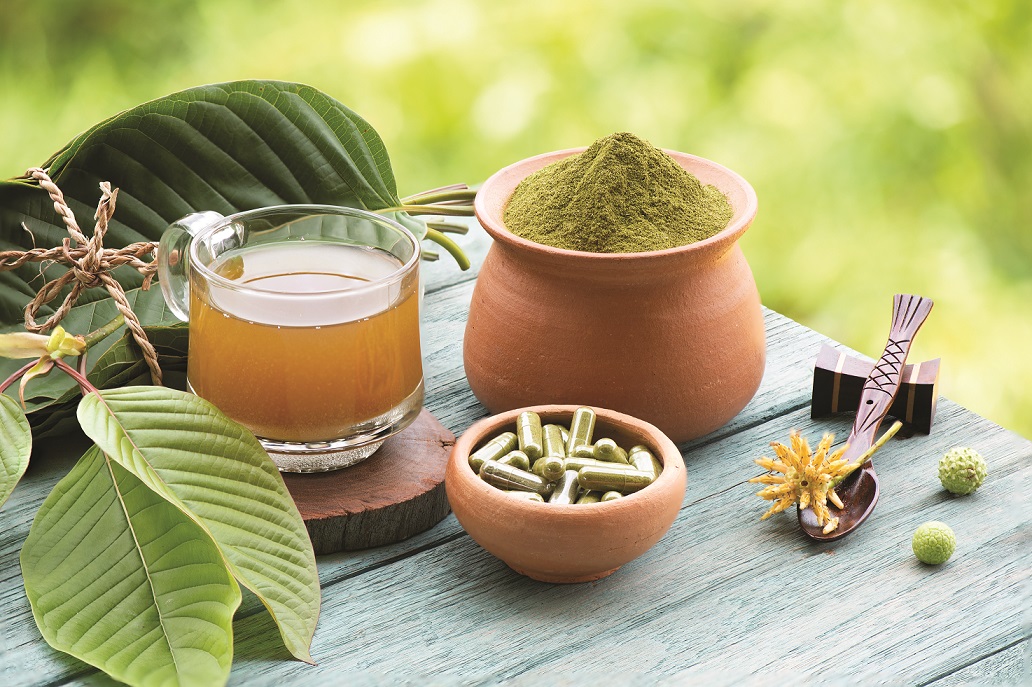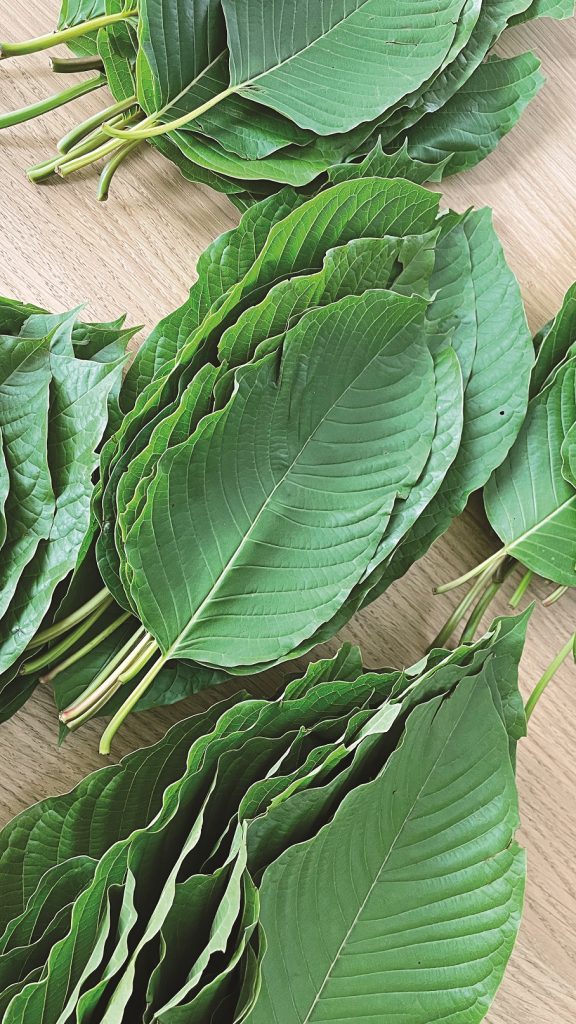Masala busts the myths around this controversial plant.
By Ashima Sethi
In August of this year, Thailand’s government announced that kratom can now be cultivated legally, and its leaves, which contain psychotropic alkaloids (stimulating properties), can also be sold commercially. The trees were subsequently removed from the list of category five controlled narcotics in the Kingdom and this decision led to thousands of individuals who had been detained and arrested on kratom-related charges being released. But what exactly is kratom and what do people use it for? We round up all the information you’ll need.
What is it?
Kratom is a tropical evergreen tree technically called the mitragyna speciose, that bears resemblance to trees in the coffee family. Native to Southeast Asia, kratom can be found in countries like Thailand, Indonesia, Malaysia, Myanmar, and Papua New Guinea, and its leaves have been used in herbal medicines for centuries as they can act as both a stimulant and a sedative depending on the dosage.
What forms does it come in?
There are several different types of kratom strains ranging from the popular white vein kratom to the milder green vein kratom. For consumption, the leaves are often dried and crushed or powdered. However, kratom is also available in paste, capsule, and tablet form, and its leaves can be smoked, chewed, or brewed in tea and other drinks.
What can I expect when I consume it?
Kratom leaves contain over 40 active compounds, however, the two most active are mitragynine and 7-hydroxymitragynine, which work on the body’s opioid receptors. Many people claim that kratom has a similar effect to morphine, which makes sense as 7-hydroxymitragynine is actually 13 times more potent than the widely used pain killer. In small doses, the leaves act as a stimulant, which can improve alertness and sociability for an hour or two. In larger doses (upwards of 10 grams), the leaves can have a sedative effect with feelings of euphoria and calmness that last a few hours.
What are the benefits of kratom?
Kratom is known for its pain relieving properties as a result of its compounds targeting the body’s opioid receptors. It has been used in treatments related to opioid addiction as it can help alleviate withdrawal symptoms from other, more dangerous opioids like ethanol.
It also has mood-enhancing effects and studies have shown that kratom has potential to be used to treat low blood pressure, as an anti-depressant, and in therapies related to anxiety disorders. In one study, mice who were exposed to kratom had low corticosterone levels, a good sign, as elevated corticosterone levels are associated with depression.
What are some potential side effects?
The most common side effects from consumption of kratom is nausea, constipation, and sometimes the inability to sleep. However, long term kratom abuse can lead to withdrawal symptoms such as sweating, itching, dizziness, seizures, liver damage, and other complications.
Where can I find it?
It is currently incredibly easy to find kratom for sale in and around Thailand. Leaves are going for as cheap at THB 100 for 100g on platforms like Facebook Marketplace, Shopee, and Lazada, and in many chain supermarkets, fresh kratom leaves are being sold in the ‘vegetable section’ as well. Moreover, if you can’t be bothered to brew a tea or create a paste yourself, kratom products are being sold across the city. Several minimarts now have vending machines where you can purchase a ‘kratom coffee’ for THB 20, while a few restaurants are now serving ‘kratom-spiked’ refreshments. Much-loved drinking hole Teens of Thailand famously reopened during the recent alcohol ban as a ‘kratom bar,’ serving up innovative refreshments brewed with kratom.
My personal experience
I’m a big fan of herbal teas ranging from my morning cup of green tea to the occasional treat of CBD tea and everything in between, so I figured it would be fitting if I gave kratom tea a go. Through my reading, I found that compared to kratom powder, making a tea out of the leaves actually leads to a completely different experience, one that is more stimulating. This is a result of the rapid absorption and digestion, and is recommended for those who are looking for a mood or energy boost rather than a feeling of relaxation.
After my experience, I would recommend drinking this tea in the morning unless you enjoy not getting any sleep. I used fresh kratom leaves rather than dried ones, which are said to be more potent so I was careful about getting the dosage right. I started with approx. 2 grams of kratom which I boiled in a mixture of water and apple cider vinegar for about 20 minutes, I then let it sit and steep for another 10. I then added 1 teaspoon of baking soda (said to remove the acidic taste from the tea) but it still tasted rather bitter, so this is a warning for anyone who wants to try kratom: it is an incredibly bitter leaf. To offset the bitterness, I added some honey to the mixture but looking back I should’ve added some lime as well. Make sure to keep stirring your tea as you consume it or all of the compounds from the leaf will settle on the bottom of the cup.
Because I brewed a low dose of the kratom, I didn’t experience anything too world-shattering. I definitely felt more awake, with a buzz that was similar to that of a caffeine high but slightly more intense. I could definitely imagine getting some work done while high on kratom, or at least some cleaning and organising. At no point did I feel any anxiety or have any negative feelings, which is testament to the tree’s ability to improve overall mood. The only real side effect I experienced was that I drank the tea on an empty stomach so my tummy did feel slightly uncomfortable. But then again as someone who suffers from acid reflux, it isn’t a new experience to have my stomach turn against me.
Overall, kratom is an interesting plant and I’m looking forward to more research being done to better understand its benefits and potential use in our day-to-day lives. There is already a significant amount of research on the internet, including experiences shared by individuals who are veterans at getting super high on kratom, which I would recommend to anyone looking to try the plant in any form!







